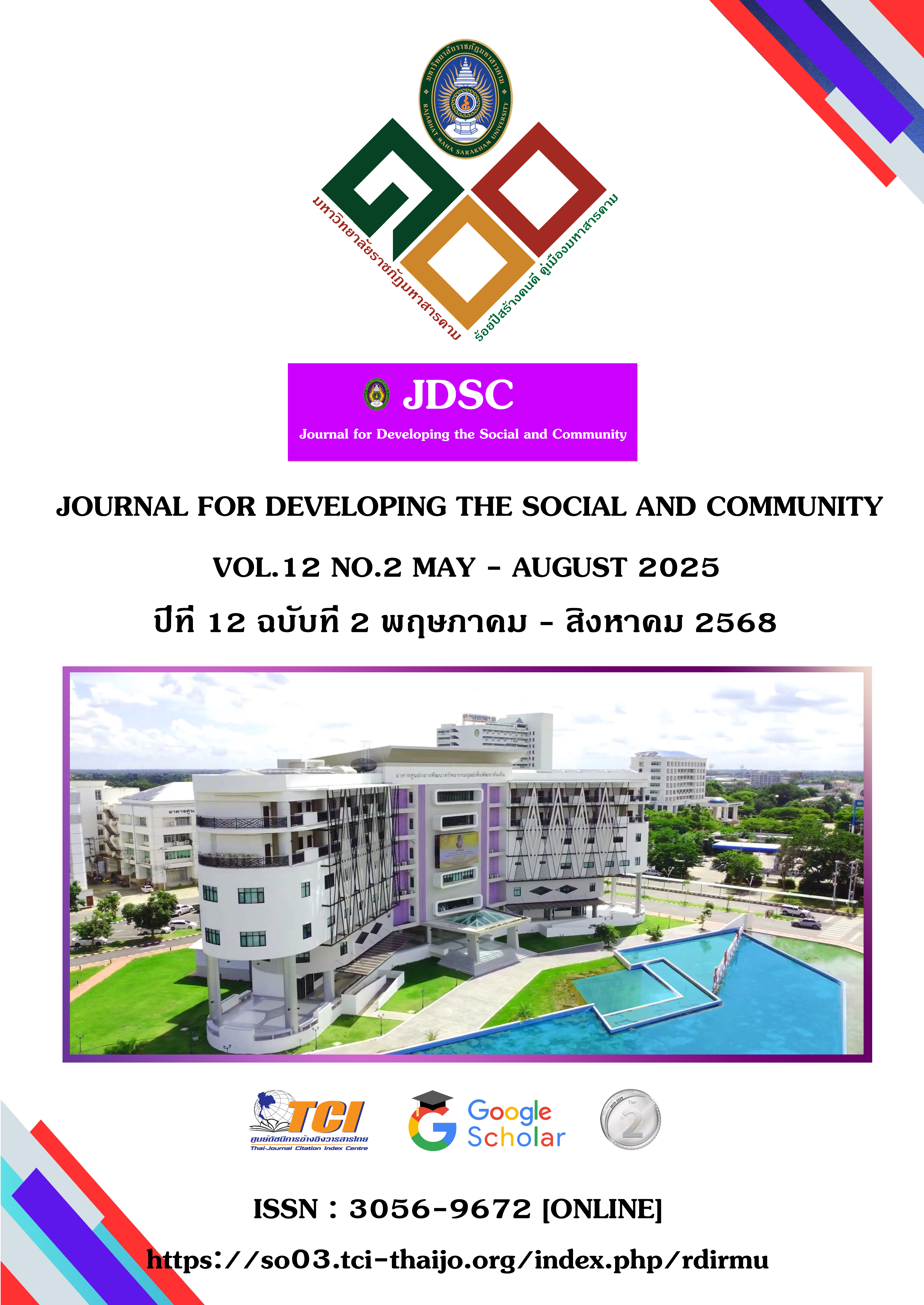A Study on the Creation of Chinese Contemporary Dance Inspired by the Qiang Ethnic Dance Culture in Northern Sichuan
Keywords:
Qiang ethnic dance, Participatory dance culture management, Practice-led research, Intangible cultural heritage preservation, Collaborative choreographyAbstract
Background and Aims: The Qiang ethnic minority of Northern Sichuan, China, possesses a rich tradition of dance practices that embody spiritual, ritualistic, and social meanings. However, these traditions remain underrepresented in contemporary artistic discourse. This study aims to investigate the traditional dance forms of the Qiang people and reinterpret them through the creation of a contemporary Chinese dance work, XiangYun, employing participatory dance culture management principles to ensure cultural sustainability and ethical engagement.
Methodology: The research adopted a qualitative, practice-led approach integrating ethnographic fieldwork, semi-structured interviews, and collaborative choreographic workshops. Thematic content analysis was employed to interpret cultural and choreographic data, while descriptive statistics were used to analyze audience feedback. Community members were actively engaged as co-creators throughout the artistic development process.
Results: The study identified three principal Qiang dance forms: Wu, Sacrifice, and Guozhuang, each with distinct ritualistic and communal functions. The co-creation process led to the development of XiangYun, incorporating traditional motifs into contemporary aesthetics. Audience evaluations indicated strong perceptions of cultural authenticity (95%) and emotional engagement (90%), affirming the effectiveness of participatory methodologies in sustaining intangible cultural heritage.
Conclusion: The findings demonstrate that participatory, practice-led approaches can foster culturally sensitive and innovative reinterpretations of traditional dance. Collaborative engagement with community members not only enhances artistic authenticity but also supports the sustainable transmission of cultural knowledge. This research highlights the potential of participatory frameworks to bridge tradition and innovation within contemporary dance practices.
References
Bhabha, H. K. (1994). The Location of Culture. London: Routledge.
Bishop, C. (2023). Artificial hells: Participatory art and the politics of spectatorship. London: Verso.
Jackson, A., & Boal, A. (2005). Games for actors and non-actors. London: Routledge.
Kaur, K., Grama, B., Roy Chaudhuri, N., & Recalde-Vela, M. J. (2023). Ethics and Epistemic Injustice in the Global South: A Response to Hopman’s Human Rights Exceptionalism as Justification for Covert Research. Journal of Human Rights Practice, 15(2), 347-373. https://doi.org/10.1093/jhuman/huad008.
Kuppers, P. (2011). Disability culture and community performance: Find a strange and twisted shape. Springer. https://doi.org/10.1057/9780230316584
Loiacono, V. (2022). Authenticity and Its Implications for Intangible Cultural Heritage: The Case Study of the Dance Genre Egyptian Raqs Sharqi. Heritage & Society, 15(3), 299-324. https://doi.org/10.1080/2159032X.2022.2126218
Schechner, R. (1985). Between theater & anthropology. Philadelphia: University of Pennsylvania Press.
Tan, Z.L., & Jirajarupat, P. (2022). The Cultural Construction and Self-Identity of Qiang Dance in Post-Disaster Recovery. Webology, 19(1), 7133 – 7141.
Toscani, G., & Prendergast, G. (2022). The role of reciprocity and reputation in service relationships with arts organisations. Journal of Services Marketing, 36(6), 800-812. https://doi.org/10.1108/jsm-10-2020-0436.
Wan, D. (2017). Growth in the Faith: an Anthropological Study on Excavation, Protection and Inheritance of Qiang Dragon Dance. In 2017 3rd International Conference on Economics, Social Science, Arts, Education and Management Engineering (ESSAEME 2017) (pp. 394–397). Paris: Atlantis.
https://doi.org/10.2991/ESSAEME-17.2017.91
Whatley, S. (2022). Embodied Cultural Property: Contemporary and Traditional Dance Practices. International Journal of Cultural Property, 29, 171–181. https://doi.org/10.1017/S0940739122000108
Xun, L. (2023). Research on the Integration Teaching of Dance-related Intangible Cultural Heritage and the Ethnic Folk Dance Professional Course in Local Universities. Frontiers in Art Research, 5(10), 22 – 27. https://doi.org/10.25236/far.2023.051005
Yang, X. (2023). The Historical Influence of Modern Dance on the Development of Contemporary Dance in China. Frontiers in Art Research, 5(16). https://doi.org/10.25236/far.2023.051603.
Downloads
Published
How to Cite
Issue
Section
License
Copyright (c) 2025 Journal for Developing the Social and Community

This work is licensed under a Creative Commons Attribution-NonCommercial-NoDerivatives 4.0 International License.
Articles that are published are copyrighted by the authors of the articles







